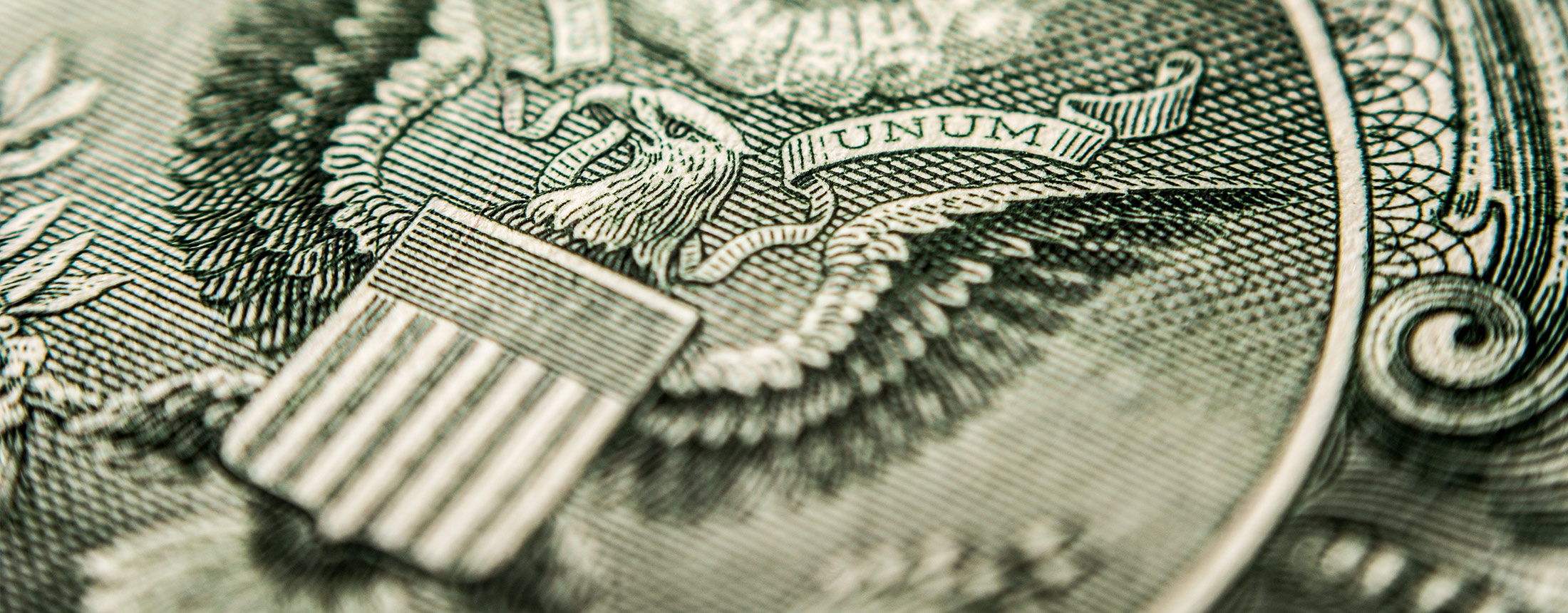What a change in just a few short weeks. On 19th December, following the FOMC meeting, Fed Chairman Powell signalled further rate increases were likely in 2019 along with a continued reduction in holdings of US Treasury securities and Mortgage-backed securities. The S&P 500 plunged in response and on 4th January, Chairman Powell changed focus to emphasising the scope for “pause" to assess the monetary stance. Then the January FOMC statement removed reference to “further gradual increases" in the fed funds rate, replacing those words with “future adjustments".
Clearly, the Fed was quick to respond to the tightening of financial market conditions and the quick response has been successful in reviving risk assets. We believe the pull-back from the Fed on future rate hikes will diminish the relative cyclical support that has helped underpin the dollar. The dollar (DXY index) advanced by 1.1% in Q4 but has failed to make any further gains in Q1 2019 and the removal of rate hikes from the US yield curve will limit dollar upside from here.
We also see the dollar as vulnerable to some further worsening of the economic outlook on weaker data just as China and Europe show some stability. Weekly Initial Claims data in the US is showing indications of bottoming that could signal some further slowing in the US jobs market ahead. While the 20k gain in NFP in February was excessively weak and not an accurate reflection of labour market conditions, slower jobs growth ahead would still have a big impact on deterring US dollar demand.
Of course, the dollar will only weaken if demand for non-dollar currencies picks up. We see this as plausible, in particular for the euro and the pound. Firstly, some of the weakness in German manufacturing data was temporary. Onerous auto emission testing rules hit auto production severely in Q3 into Q4. Auto production and sales picked up in February suggesting the sector has turned a corner. In addition, low levels of water on the river Rhine impacted delivery times of goods that also hit production but water levels have now returned to normal. We expect German real GDP to rebound in Q1 and Q2 2019.
Secondly, we expect good domestic demand growth in the euro-zone. Euro-zone wage growth (ECB compensation per employee) increased by 2.5% on an annual basis in Q3 2018, the largest increase since early 2009. The euro-zone this year will also experience net fiscal stimulus. According to the European Commission this will equate to around 0.3-0.4ppt of GDP – the largest net stimulus since the Global Financial Crisis.
Finally, we do not expect a 'no-deal' Brexit. While this would be very negative for the pound, it would drag the euro lower as well given the negative impact on the German economy specifically. We also expect a US-China trade deal to be agreed and we do not expect President Trump to follow through with global trade tariffs on imports to the US. All of these factors lead us to believe that sentiment in Europe can improve this year – and with that, help lift both the euro and the pound versus the dollar.
We firmly believe the risk-reward is currently skewed in favour of non-dollar currency outperformance.
Support for EUR/USD around 1.1200 has been impressive despite Italian political uncertainty, weak economic performance and Brexit uncertainties.
We believe structural factors help explain this support also. While the US is running a 'twin deficit' (Current account and government budget deficit) of around 7.0% of GDP, Germany is the complete opposite, running a 'twin surplus' of around 9% of GDP. Euro-zone investor appetite for foreign bonds has diminished of late. The US is increasing its dependence on foreign financing of its deficits and we believe part of ensuring this continues will require US assets to cheapen going forward – US dollar depreciation is the least disruptive way for that to materialise.
Derek Halpenny
European Head of Global Markets Research.
This article originally appeared in Nikkei Veritas on March 31, 2019.


